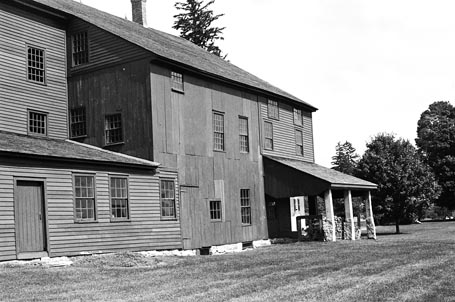 Samurai House & Garden image from Just Enough by Azby Brown. (Those samurai really knew how to live.)With his 2005 book The Very Small Home: Japanese Ideas for Living Well in Limited Space Azby Brown made a welcome appearance on my radar. He’s an architect and design theorist originally from New Orleans who’s been living in Japan since the mid ‘80’s. An interest in traditional Japanese wooden architecture initially attracted him to Japan, and the adaptation and reinterpretation of that tradition in contemporary Japanese architecture and design continue to intrigue him today. He’s the director of the Future Design Institute in Tokyo at the Kanazawa Institute of Technology.
Samurai House & Garden image from Just Enough by Azby Brown. (Those samurai really knew how to live.)With his 2005 book The Very Small Home: Japanese Ideas for Living Well in Limited Space Azby Brown made a welcome appearance on my radar. He’s an architect and design theorist originally from New Orleans who’s been living in Japan since the mid ‘80’s. An interest in traditional Japanese wooden architecture initially attracted him to Japan, and the adaptation and reinterpretation of that tradition in contemporary Japanese architecture and design continue to intrigue him today. He’s the director of the Future Design Institute in Tokyo at the Kanazawa Institute of Technology.
His latest book Just Enough: Lessons in Living Green from Traditional Japan explores how sustainable practices of the Edo period can inform how we shape a sustainable future. For an informative introduction to Brown and Just Enough, check out this interview on Seeds and Fruit. You can also see and hear Brown highlight the book and its mission on this TEDxTokyo video or catch his Pecha-Kucha presentation in Tokyo. Additional information is available on the Just Enough website.
In a recent post by Brown in the Atlantic he shares a more personal example of a Japanese approach to sustainability, which could also inspire sustainable approaches elsewhere. It’s the story of his neighbor’s urban farm in “the middle of Yokohama, a progressive city of 3.6 million”. As with the lessons in Just Enough, Brown appreciates that often successful, Japanese solutions recognize how everything is inter-related.
It is in many ways common sense, that issues of energy, water, materials, food and population are intertwined, yet sometimes we need to be reminded how a healthy, interdependent, renewable system has worked and can work in order to imagine how it might work in a different time and place.
by Katie Hutchison for House Enthusiast




